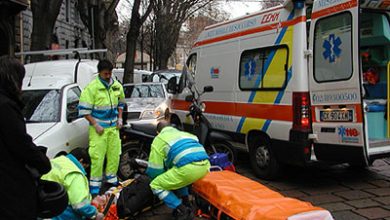Gianmarco Guarino, Giuseppe Pulito, Antonio Micella, Maurizio Tiano, Andrea Tarantino, Giovanni Cappiello, Dario Alicino, Enio De Cruto, Umberto Ripani
The “Golden Hour” is the 60 minutes immediately post-trauma within which time the survival rate is much higher if patients are able to reach definitive care for treament of their injuires. The organization of a traumatological network for an up-and-coming trauma center is very complex, has a very long implementation curve, and very often the international flow charts must be changed and adapted to match the local reality. The aim of this paper is to analyze the types of trauma, the probability of death, and the outcomes and complications of polytrauma patients who received treatment at the Vito Fazzi Hospital in Lecce between 2017 and 2018. Selecting from a total of nearly 150,000 entries into our emergency department, 56 polytrauma patients were chosen for enrollment in this study. All fractures were treated according to the ATLS principles. The criteria used to evaluate this group of patients was: the number of injuries, the average Injury Severity Score upon admission and discharge from the emergency department (ED), the averange Glasgow Coma Scale upon admission and discharge from the ED, the duration of stay (in hours) in the ED, the index of death at admission to the ED and upon discharge from the shock room based on SAPS III scores, mortality within 1 month post-trauma, whether or not patients underwent surgery, patients needing damage control, patients not treated with urgency, the number of angioembolizations, and the average stay of patients in the resuscitation unit. Males were more than three times likely to be affected with respect to women. Most patients were employed primarily in the industrial sector, however, the top cause of trauma was traffic accidents. On average, the patient was in the emergency room about 4.64 hours. 291 were lesions associated with the patient’s polytrauma condition. All patients’ scores improved in three subgroups of four with p<0.05. The average hospitalization days in the intesive care unit for the patients was 15.3 days. The three most common complications at the time of discharge from the resuscitation unit were, in order: mental disorders, urinary tract infections, and chest complications. The presence of an organized polytrauma team and a well-defined standard operating procedure could be a better way of managing patients with polytrauma efficiently and effectively




